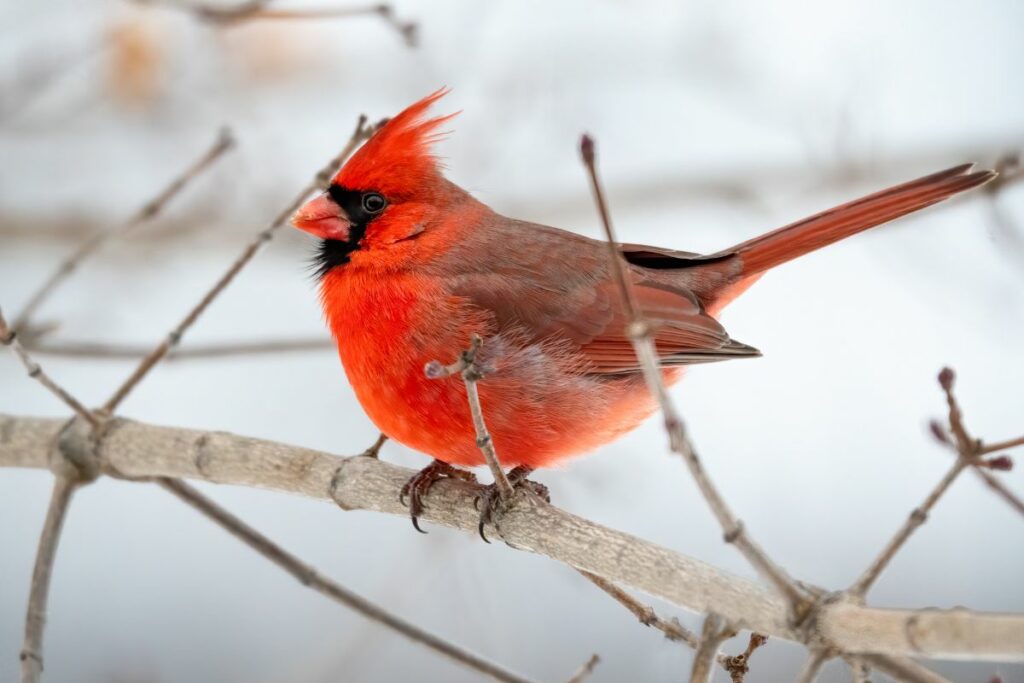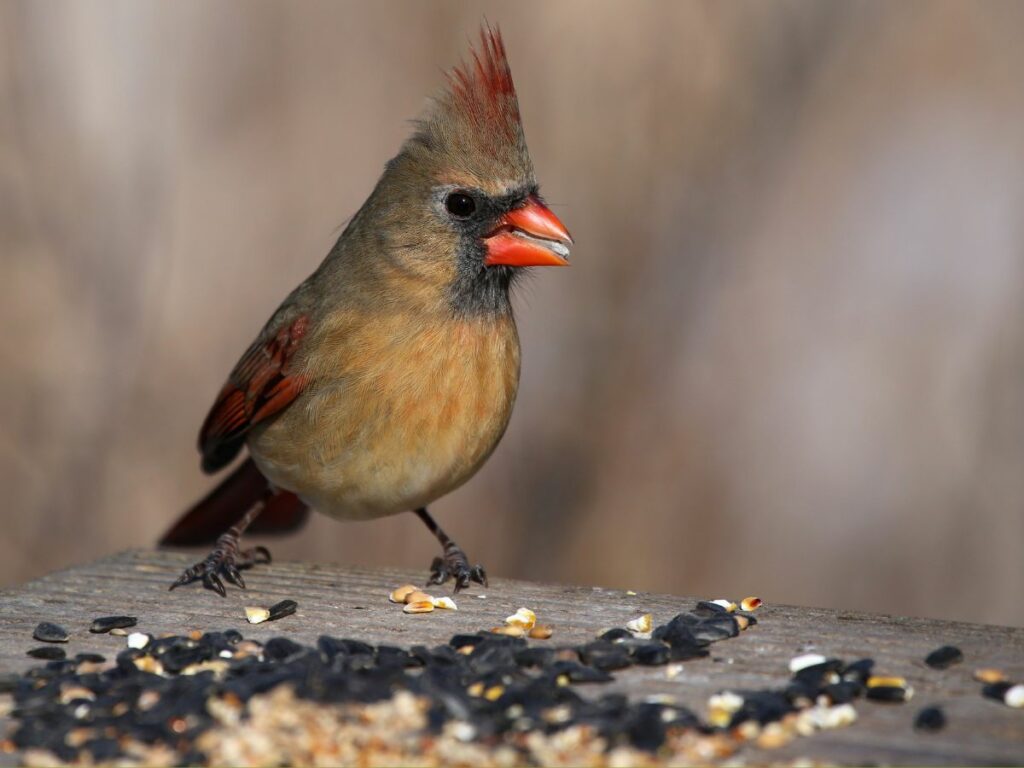Winter brings a transformation to our gardens, cloaking them in a blanket of snow. Amidst this frosty scenery, the cardinal emerges as a vivid emblem of life and color. Their presence not only enlivens the barren landscape but also brings practical benefits like pest control and pollination.
Transforming your backyard into a habitat for cardinals can provide enjoyment throughout the chilly months. Continue reading to discover essential tips on how to attract these charming birds and create a year-round haven for them.
Cardinal Insights

Cardinals are vibrant birds found across the Americas, with the Northern Cardinal being a prominent feature in many North American backyards. You might recognize them by their vivid red feathers, striking tuft, and the dark mask-like area around their beaks. In contrast, the Desert Cardinal, prevalent in the U.S. Southwest and Mexico, displays a more subdued grayish-brown coloration but shares a similar body structure.
You’ll find that these birds are permanent residents, providing you with year-round opportunities to observe them. If you enjoy bird songs, you’ll appreciate the cardinal’s tuneful chirping, which contributes to a serene atmosphere. Additionally, since cardinals consume insects, they can naturally help manage pests in your outdoor spaces.
Key Cardinal Characteristics:
- Northern Cardinal: Bright red with black facial markings
- Desert Cardinal: Grayish-brown, found in arid regions
Advantages of Cardinals in Your Garden:
- Enchanting songs
- Natural pest control through their diet of insects
Enticing Cardinals to Visit Your Garden
1. Selecting Suitable Feeders
Offering food to cardinals begins with setting up the proper type of bird feeder. These birds are larger than many common songbirds and require a feeder with enough space to accommodate their size. Select feeders that have ample perching space with edges where cardinals can comfortably sit and feed while keeping a watchful eye on their surroundings. To increase their sense of security, position these feeders near trees or shrubs, but in a spot sheltered from strong winds.
2. Providing Preferred Foods

Cardinals have a penchant for larger seeds and enjoy a variety of nutritious options. Offer them a blend of sunflower seeds, shelled peanuts, and cracked corn to keep them coming back. They also have a fondness for suet, so ensure that any suet feeders are in a secure location. Maintain clean feeding stations and supply food throughout the seasons, as cardinals do not typically migrate. They also enjoy:
- Raisins
- Safflower seeds
- A mix of berries, such as blueberries, raspberries, and blackberries
- Apple slices
- Grapes
- White milo
- Suet (particularly in winter)
- Nyjer and thistle seed
3. Ensuring Access to Clean Water
Providing a source of fresh water can be as crucial as food. An ideal bird bath will be 2-3 inches deep and, if possible, have a feature that keeps water in motion, which helps keep it clean. Regular cleaning is essential to prevent the spread of disease and to discourage mosquitoes from breeding. If residing in colder climates, take measures to prevent the water from freezing.
4. Offering Protection and Shelter
Creating a sense of security for these naturally cautious birds is important. Place feeders where they offer easy access to shelter, such as low to the ground near bushes or on tree branches. If there are no predators around, consider placing a mat beneath the feeder for ground-feeding individuals. Introduce evergreen plants instead of deciduous ones to create year-round cover, as deciduous plants will not offer shelter during the leafless months.
5. Fostering a Nest-Friendly Habitat
While it’s not recommended to build nests for cardinals, you can encourage them to nest in your garden by providing suitable nesting materials. Place strands of twigs, grass, and leaves near feeders or shrubbery. Also, offer materials like pet fur or human hair in an empty suet feeder. Be mindful not to include harmful materials like plastic or dryer lint. If you opt for a nesting box, ensure it meets the size and safety needs of cardinals and position it in a protected area up to 10 feet above the ground, away from predators.

